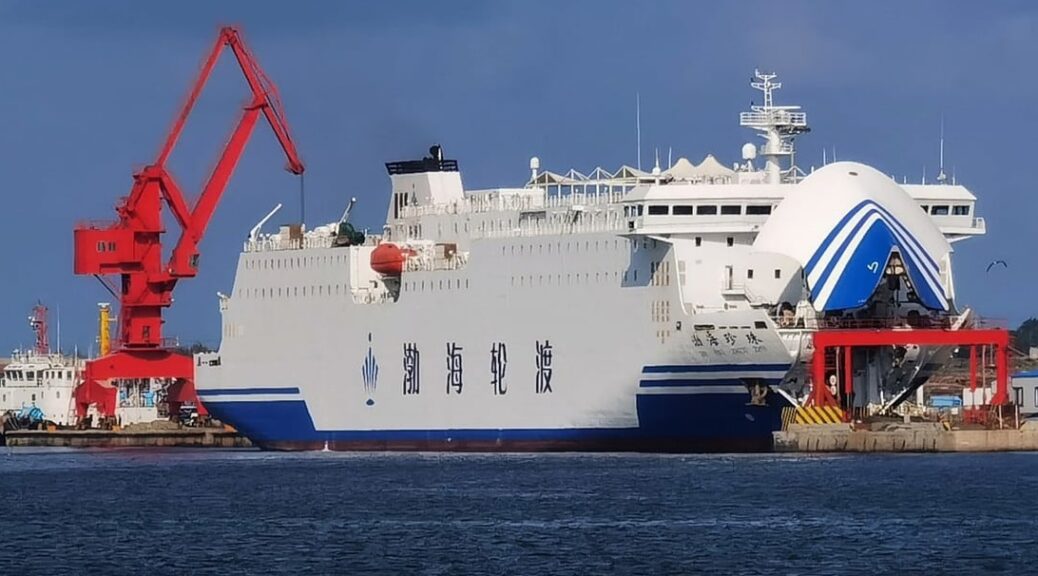You are here
Is COSCO China’s Secret Invasion Fleet?
Is COSCO China’s Secret Invasion Fleet?
John Konrad April 1, 2023 https://gcaptain.com/is-cosco-chinas-secret-invasion-fleet/
China’s People’s Liberation Army (PLA) is reportedly utilizing civilian roll-on/roll-off (RO-RO) ferries, operated by prominent maritime companies such as COSCO, to bolster its amphibious landing capabilities, potentially in preparation for a prospective invasion of Taiwan.This development, which has received little international attention, may have significant implications for the balance of power in the region.
According to a new Center for International Maritime Security (CIMSEC) article by Conor Kennedy, the PLA has been modifying civilian RO-RO ferries with new stern ramps, enabling them to launch and recover military combat vehicles directly onto beaches from offshore. This strategy might address the PLA’s longstanding shortfall in amphibious assault forces, allowing them to quickly close the gap in their organic sea lift capacity.
“Noted modifications included rapid egress corridors for personnel and some small equipment,” says Kennedy, an researcher at the U.S. Naval War College. “They have also modified compartment design to resist sinking when damaged, and new hydraulically driven systems to enable greater stern ramp extension for moving amphibious armor on and off the vessel at sea.”
Information sourced from PRC media (linked in the article’s footnotes) show that two major shipping conglomerates, the state-owned COSCO and the Bohai Ferry Group, have been implementing such modifications in recent years, responding to the PLA’s growing demands. The modified ferries are expected to provide the PLA with a significant boost in its amphibious capabilities across the Taiwan Strait.
Kennedy’s article highlights the PLA’s use of the 15,560-ton RO-RO ferry Bang Chui Dao, owned and operated by COSCO Shipping Ferry Company, as a prime example of this trend. During a 2019 military exercise, the Bang Chui Dao demonstrated its ability to launch and recover amphibious combat vehicles using its modified stern ramp.
In addition to the Bang Chui Dao, other RO-RO ferries have also received similar modifications, further expanding the PLA’s amphibious lift capacity. The Bohai Ferry Group has also been modifying its fleet of ferries, including the installation of new hydraulic assemblies on the stern ramps of four 36,000 gross-ton ferries. These new systems have been operational in recent PLA amphibious exercises, deploying and recovering amphibious forces from offshore.
The modifications to civilian RO-RO ferry ramps have the potential to significantly augment the PLA’s access to amphibious military sealift. The PLA’s increasing reliance on these modified ferries highlights China’s commitment to enhancing its amphibious capabilities, which could have implications for the balance of power in the region and the security of Taiwan.
China is, of course, not the only nation to use commercial ships for military operations. The US also leverages dual-use military/civilian sealift ships to enhance global logistics capabilities. Through programs like the US Department of Transportation’s Maritime Security Program (MSP) and Department of Defense’s Maritime Prepositioning Force (MPF) program, the US employs civilian-crewed ships for the rapid deployment of military forces worldwide and, last year, Commandant of the Marine Corps General David H. Berger in his 38th Commandant’s Planning Guidance, outlined the need to update and harden the America’s dual-use fleet.

